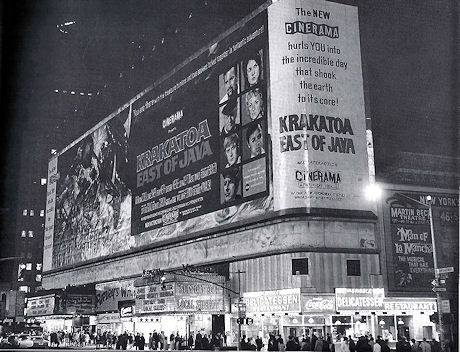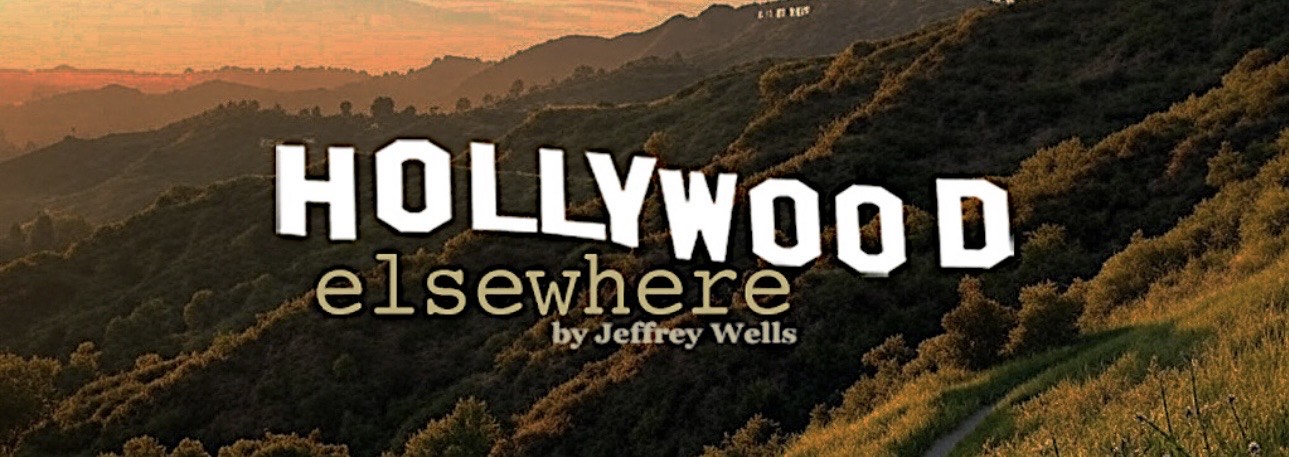Obviously a super-sized Times Square billboard circa March 1969, but a truly terrible film. You can just barely discern that Where Eagles Dare and Support Your Local Sheriff were playing at the Astor and Victoria.

The film that may have been responsible for the early to mid ’70s wave of disaster films, which ironically reached their peak with Richard Lester’s Juggernaut, a superior suspense film that included no disaster shots whatsoever but was funded as another disaster-brand attraction.
Vincent Canby‘s review of Krakatoa, East of Java, published on 6.26.69, reads as follows:
“If I hadn’t read the credits first, I would have sworn that the new Cinerama production had been made by Mike and George Kuchar, the satirical, underground movie-makers whose science fiction triumph, The Sins of the Fleshapoids, was made in a New York apartment.
“The reversal of truth, so consistent and systematic that it becomes a positive style, is not achieved casually. Krakatoa, East of Java is about the volcano west of Java that erupted in 1883. It opens with the climax in the credits and proceeds to the beginning. It was shot in Cinerama by a television director who, through the use of lots of tight close-ups, makes people look bigger than mountains.
“Its most breath-taking panoramic shots are of things like shoes and foreheads. Although it should depend on a variety of special, cataclysmic effects, it has so few different ones that by the time the movie ended, I had gotten to know and recognize volcanic rocks that had flown by me before.
“The ads for the movie, which opened to the public yesterday at the Cinerama Theater, carry a quote from a Los Angeles reviewer praising a ‘terrifying typhoon,’ which is not in the movie. Maximilian Schell, Rosanno Brazzi, Brian Keith and Sal Mineo are.
“Footnote: Krakatoa, the island site of the 1883 volcanic eruption, lies in the Sunda Strait, west of Java. I’m told the geographic error in the movie’s title was discovered only after all the advertising and publicity materials had been prepared. The producers, after considering the high cost of geographic accuracy, vetoed a suggestion that new materials be printed.”
